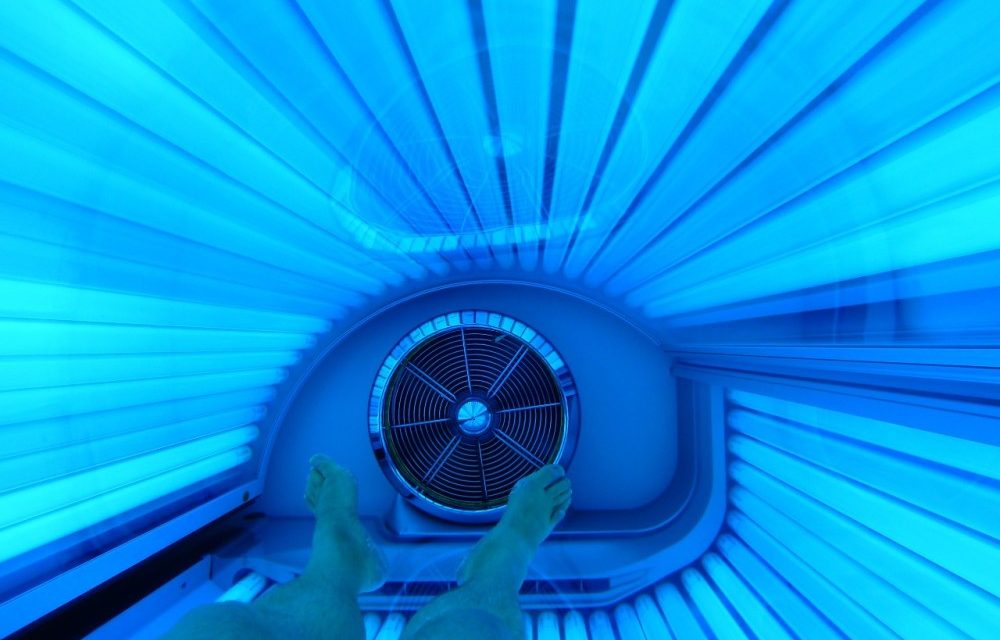 Economy
Economy 
The third in a series of articles looking at the potential for new devolved taxes, we consider whether a tanning tax will work in Wales
For lots of people, the thought of popping on a pair of goggles and some tanning lotion to spend ten minutes in a booth decked out in strips of fluorescent bulbs is a pretty alien concept. We ignore the various signs and banners on our high streets advertising the purported health benefits of spending a few minutes absorbing UV rays from a tanning bed, and don’t give a seconds thought to the harm these salons may be causing.
But plenty of us have indulged in sunbed use. Whether it’s a couple of sessions ahead of a big event or bi-weekly tan top-ups, there are still plenty of sunbed salons operating across Wales despite increased regulation. A quick Google search for a tanning salon from my desk here in Merthyr shows that there are approximately a dozen within a 10 mile radius, some offering services for a low as 30 pence per minute.
There is hardly any data on the prevalence of tanning salons and their usage in Wales, so we can only refer to the most recent estimates which indicate that there are 400-500 retailers (made in 2009), and that a quarter of adults in the UK have used a sunbed at least once (also 2009). While there appears to have been considerable growth in the fake tanning market, this coupled with regulations seem to have done little to curb availability to those over 18.
Why sunbeds?
Skin cancer rates in Wales are comparatively high compared the rest of the UK. The latest data indicates that there has been a clear upwards trend in the number of new cases of malignant melanoma being diagnosed in Wales, with the figures almost doubling for men between 2001-13. And although malignant melanoma can be treated, it was the cause of death for 125 people in 2013.
The sunbed industry is keen to promote the health benefits of tanning beds, claiming that it provides us with a much-needed source of vitamin D. But they are less keen to highlight the link between excessive exposure to UV light and risk of melanoma. In fact, Cancer Research UK states that using a sunbed before the age of 35 increases the risk of cancer by 59%.
How would the tax work?
A tanning tax would seek to dramatically reduce the number of people visiting tanning salons or reduce the number of visits they make, to reduce their risk of skin cancer.
We think that the most effective way to do this would be to introduce a tanning tax that operates as a sales tax so that it is paid directly by customers. Although this may result in a higher rate of compliance issues than a flat rate tax on salons or the number of sunbeds per salon, this is the most likely way that the tax will affect consumer behaviour.
The tanning tax would be a sales tax applied to each tanning session purchased, as a proportion of the overall cost of the session. If we assume than the longer the session, the more expensive it is, then we can assume that those opting for lengthier sessions (which present an increased risk to skin health) will be required to pay more tax than those opting for shorter sessions.
Is there a precedent?
A sunbed tax has been operating in the USA since 2010, in the form of a 10 per cent sales tax on all salons that use sunbeds. It was introduced in the Affordable Care Act, with the expectation that it could raise $2.7 billion in the first decade it was applied. It was justified on the basis of the harm that sunbeds cause to people, and as a way for federal government to raise revenue to invest in the healthcare service.
The tax was deeply opposed by owners of tanning salons and other businesses which offered sunbed services, and questions were raised over why certain operators – such as gyms – were exempt from the tax. Recent research by the American Suntanning Association estimated that 10,000 salons had closed since the tax was introduced, and has halved the number of people employed in the industry. However, the closure of so many salons also indicates that the demand for sunbed services must have dramatically reduced during the past five years. Although the tax may not raise the intended revenue, it does seem to have worked at deterring people from using sunbeds in a commercial setting.
What about other ‘harmful’ retailers?
Of course, taxing businesses which offer tanning bed services opens up a door to taxing all sorts of ‘harmful’ retailers such as tobacconists and betting shops. What initially seems like a ‘no brainer’ may set a precedent that would unsettle both small and large businesses – the idea that they could be required to pay different levels of rates depending on whether they are deemed to offer ‘good’ or ‘bad’ services by the Welsh Government.
This is something which those considering the tax should take into account, but it is not a free pass for inaction. Sunbed use is a known harm and there is more we could be doing to reduce it. By raising the cost, it should deter people from using it and encourage frequent users to cut down their usage, while ensuring that the industry goes some way to contributing to the harm tanning bed use causes.
Nisreen Mansour is policy & research officer at the Bevan Foundation.
Each week, we will be profiling our interim recommendations for new devolved taxes for Wales. To learn more about our work on devolved taxation, please click here.


